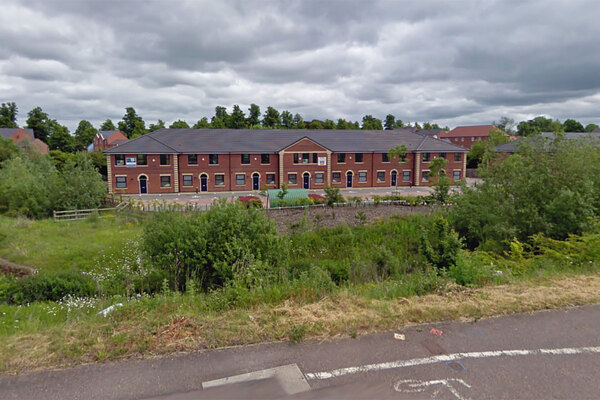BBC Panorama: Grenfell insulation had added fire retardant for safety test
A BBC investigation will tonight claim that extra fire retardant was added to the insulation used on Grenfell Tower before it passed a now-withdrawn safety test.
Panorama will report that Celotex marketed the insulation as suitable for use with cladding panels and for tower block refurbishment projects like Grenfell.
This is despite the official test clearing it for use alongside fibre cement board cladding, which has a far higher level of fire resistance than the aluminium composite panels it was used with on Grenfell.
The programme will claim that Celotex directly marketed its insulation to the contractors who were refurbishing Grenfell.
It will report legal advice it has received that the insulation firm’s behaviour could amount to corporate manslaughter.
Polyisocyanurate is known to release cyanide gas when burned. It is widely used in the building industry, including on many high rises.
A spokesperson for Celotex told Panorama: “We believe that the right forum for considering and assessing the many, complex and inter-related issues which arise in relation to the fire – and which require consideration of the involvement of all relevant parties – is through these official investigations. We do not think it is appropriate to comment any further outside of or in advance of that process.
“We fully recognise the seriousness of the Grenfell fire. It is for this reason that we believe the public inquiry and the police investigation are the right processes to consider the events leading up to the fire, and the night of the fire itself.”
The company did not respond to Inside Housing’s request for comment on the claims this evening.
The government last week announced plans to consult on banning the use of combustible insulation – despite Dame Judith Hackitt’s review recommending a continuation of the current regime of allowing manufacturers to test combinations of combustible material.
The programme will also claim that the cladding panels and insulation used at Grenfell were never tested together before the fire.
Robert Bond, chief executive of Rydon, the main contractor, was reported to have told the programme that testing of the cladding system wasn’t required because “it was deemed to comply”.
Insulation is required to be of ‘limited combustibility’ or pass a safety test in the combination it will be used to be installed on a high-rise building.
Never Again campaign
In the days following the Grenfell Tower fire on 14 June 2017, Inside Housing launched the Never Again campaign to call for immediate action to implement the learning from the Lakanal House fire, and a commitment to act – without delay – on learning from the Grenfell Tower tragedy as it becomes available.
One year on, we have extended the campaign asks in the light of information that has emerged since.
Here are our updated asks:
GOVERNMENT
- Act on the recommendations from Dame Judith Hackitt’s review of building regulations to tower blocks of 18m and higher. Commit to producing a timetable for implementation by autumn 2018, setting out how recommendations that don’t require legislative change can be taken forward without delay
- Follow through on commitments to fully ban combustible materials on high-rise buildings
- Unequivocally ban desktop studies
- Review recommendations and advice given to ministers after the Lakanal House fire and implement necessary changes
- Publish details of all tower blocks with dangerous cladding, insulation and/or external panels and commit to a timeline for remedial works. Provide necessary guidance to landlords to ensure that removal work can begin on all affected private and social residential blocks by the end of 2018. Complete quarterly follow-up checks to ensure that remedial work is completed to the required standard. Checks should not cease until all work is completed.
- Stand by the prime minister’s commitment to fully fund the removal of dangerous cladding
- Fund the retrofitting of sprinkler systems in all tower blocks across the UK (except where there are specific structural reasons not to do so)
- Explore options for requiring remedial works on affected private sector residential tower blocks
LOCAL GOVERNMENT
- Take immediate action to identify privately owned residential tower blocks so that cladding and external panels can be checked
LANDLORDS
- Publish details of the combinations of insulations and cladding materials for all high rise blocks
- Commit to ensuring that removal work begins on all blocks with dangerous materials by the end of 2018 upon receipt of guidance from government
- Publish current fire risk assessments for all high rise blocks (the Information Commissioner has required councils to publish and recommended that housing associations should do the same). Work with peers to share learning from assessments and improve and clarify the risk assessment model.
- Commit to renewing assessments annually and after major repair or cladding work is carried out. Ensure assessments consider the external features of blocks. Always use an appropriate, qualified expert to conduct assessments.
- Review and update evacuation policies and ‘stay put’ advice in the light of risk assessments, and communicate clearly to residents
- Adopt Dame Judith Hackitt’s recommended approach for listening to and addressing tenants’ concerns, with immediate effect
CURRENT SIGNATORIES:
- Chartered Institute of Housing
- G15
- National Federation of ALMOs
- National Housing Federation
- Placeshapers
The Paper Trail: The Failure of Building Regulations
Read our in-depth investigation into how building regulations have changed over time and how this may have contributed to the Grenfell Tower fire:












